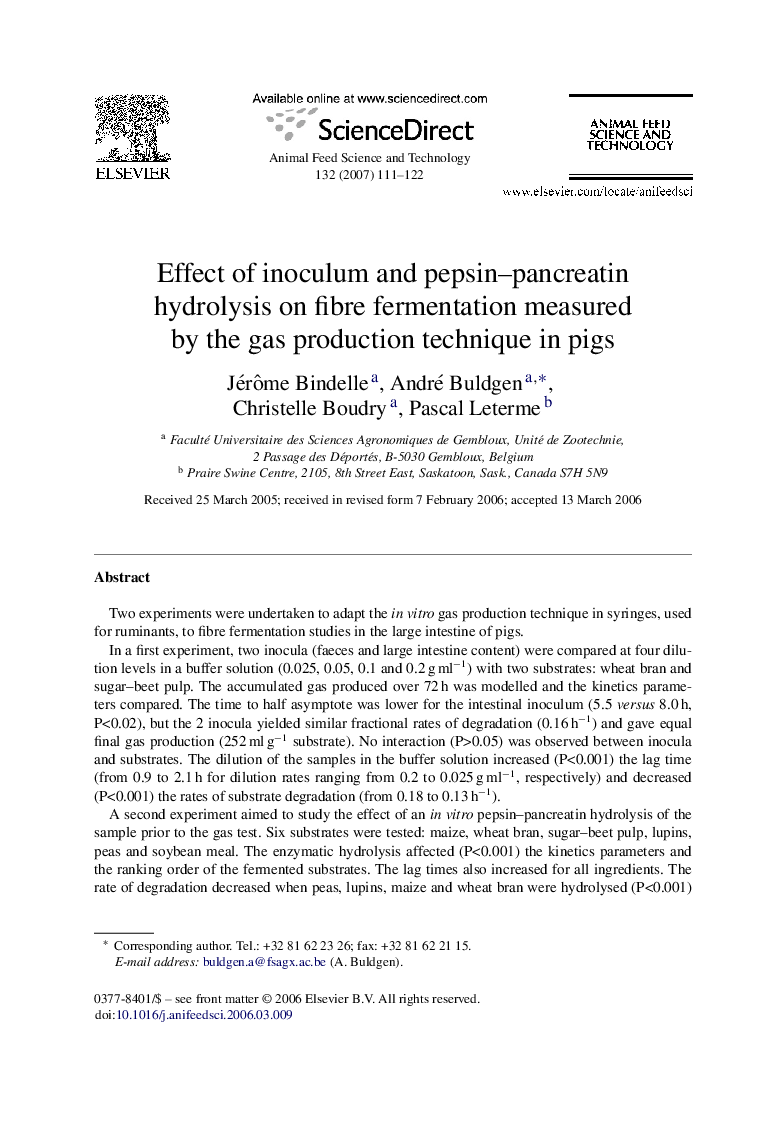| Article ID | Journal | Published Year | Pages | File Type |
|---|---|---|---|---|
| 2421081 | Animal Feed Science and Technology | 2007 | 12 Pages |
Two experiments were undertaken to adapt the in vitro gas production technique in syringes, used for ruminants, to fibre fermentation studies in the large intestine of pigs.In a first experiment, two inocula (faeces and large intestine content) were compared at four dilution levels in a buffer solution (0.025, 0.05, 0.1 and 0.2 g ml−1) with two substrates: wheat bran and sugar–beet pulp. The accumulated gas produced over 72 h was modelled and the kinetics parameters compared. The time to half asymptote was lower for the intestinal inoculum (5.5 versus 8.0 h, P<0.02), but the 2 inocula yielded similar fractional rates of degradation (0.16 h−1) and gave equal final gas production (252 ml g−1 substrate). No interaction (P>0.05) was observed between inocula and substrates. The dilution of the samples in the buffer solution increased (P<0.001) the lag time (from 0.9 to 2.1 h for dilution rates ranging from 0.2 to 0.025 g ml−1, respectively) and decreased (P<0.001) the rates of substrate degradation (from 0.18 to 0.13 h−1).A second experiment aimed to study the effect of an in vitro pepsin–pancreatin hydrolysis of the sample prior to the gas test. Six substrates were tested: maize, wheat bran, sugar–beet pulp, lupins, peas and soybean meal. The enzymatic hydrolysis affected (P<0.001) the kinetics parameters and the ranking order of the fermented substrates. The lag times also increased for all ingredients. The rate of degradation decreased when peas, lupins, maize and wheat bran were hydrolysed (P<0.001) but it increased with soybean meal (P=0.014) and sugar–beet pulp (P<0.001). Final gas production increased with peas and soybean meal (P<0.001), remained unchanged for lupins and decreased for the other substrates (P<0.001).In conclusion, the method using faeces as a source of microbial inoculum is reliable to characterise the fermentation kinetics of ingredients in the large intestine of pigs. However, it is important to hydrolyse the substrates with pepsin and pancreatin before the gas tests.
